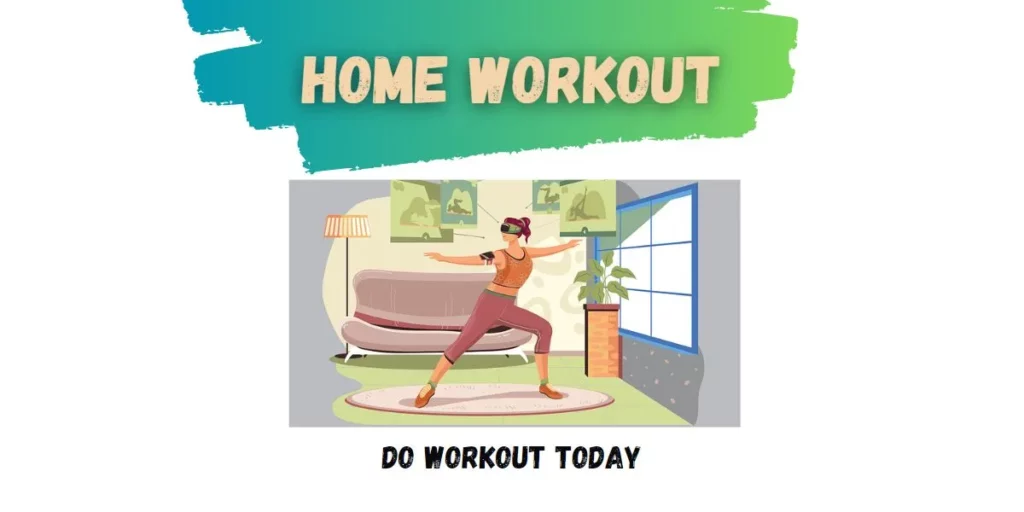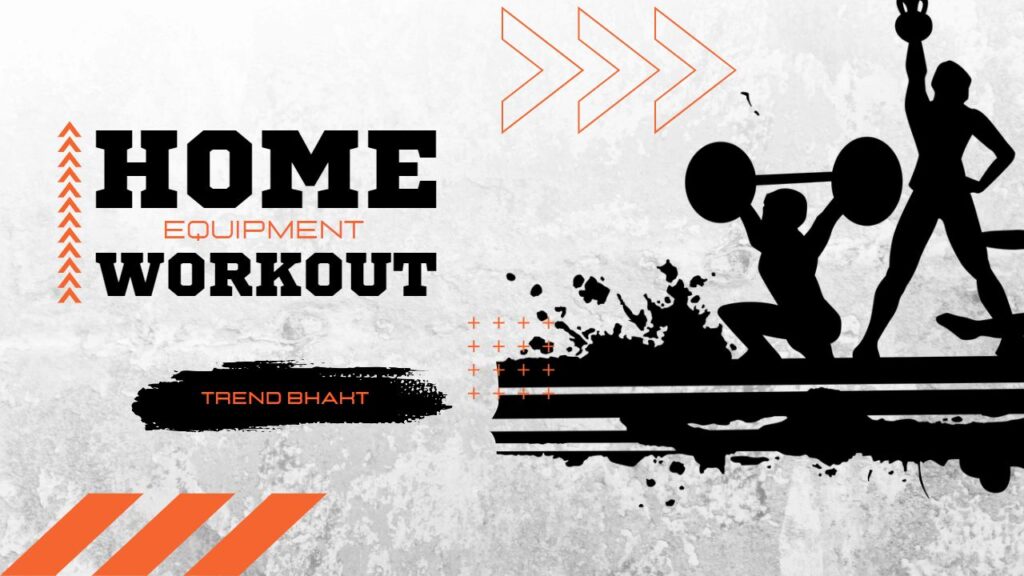Introduction: In today’s fast-paced world, finding time to hit the gym can be a challenge. However, with the rise of home workouts, you no longer have to worry about missing out on your fitness goals. Whether you’re a beginner or a seasoned fitness enthusiast, a home workout routine can help you stay fit and active from the comfort of your own home. This comprehensive guide will walk you through everything you need to know about home workouts, from the benefits they offer to practical tips for getting started.
What is a Home Workout?
A home workout refers to any exercise routine that can be performed within the confines of your own home, without the need for specialized gym equipment. It is a convenient and cost-effective way to stay active and maintain your fitness levels. Home workouts can include a variety of exercises, such as cardiovascular workouts, strength training, and flexibility exercises, all tailored to your specific goals and preferences.
Why Choose a Home Workout?
- Convenience: With a home workout, you have the freedom to exercise whenever it suits you best, eliminating the need to adhere to a gym’s operating hours.
- Cost-Effective: Home workouts eliminate the need for expensive gym memberships or equipment, making fitness accessible to everyone.
- Privacy: Some individuals may feel self-conscious or uncomfortable when exercising in a public gym. With a home workout, you can exercise in the privacy of your own space, allowing you to focus solely on your fitness journey.
- Flexibility: Home workouts offer the flexibility to customize your exercise routine according to your preferences and goals. You can choose the exercises, intensity, and duration that work best for you.
- Time-Saving: By eliminating the commute to the gym, you can save valuable time. Home workouts allow you to fit exercise into your schedule without sacrificing other commitments.

Getting Started with Home Workouts
Starting a home workout routine may seem daunting, but with the right approach, it can be an enjoyable and rewarding experience. Here are some steps to help you get started:
- Assess Your Fitness Level: Before diving into any exercise routine, it’s important to assess your current fitness level. This will help you determine the appropriate intensity and types of exercises to include in your home workout.
- Set Clear Goals: Define your fitness goals to stay motivated and focused. Whether you want to lose weight, build strength, or improve your overall fitness, having clear goals will guide your home workout routine.
- Plan Your Workout Schedule: Establish a consistent workout schedule that fits into your daily routine. Aim for at least three to five workouts per week, with each session lasting around 30 minutes to an hour.
- Choose the Right Exercises: Select exercises that target different muscle groups and provide a balanced workout. Include cardiovascular exercises, strength training exercises, and flexibility exercises to achieve overall fitness.
- Start Slow and Progress Gradually: It’s important to start at an appropriate intensity level for your fitness level and gradually increase the intensity and duration of your workouts as you get stronger and more comfortable.
- Stay Hydrated and Fuel Your Body: Drink plenty of water before, during, and after your home workouts to stay hydrated. Additionally, fuel your body with nutritious foods to support your exercise routine.
Creating a Home Workout Space
Designating a dedicated space for your home workouts can enhance your motivation and make your fitness routine more enjoyable. Here’s how to create an inviting and functional workout space:
- Find a Suitable Area: Identify an area in your home that has enough space to move freely. It could be a spare room, a corner of your living room, or even your backyard if weather permits.
- Clear the Space: Remove any obstacles or clutter from the designated area to create a safe environment for exercise. Make sure there’s enough room for you to perform a variety of movements without restrictions.
- Arrange Fitness Equipment: Depending on your preferences and fitness goals, you may choose to include some basic fitness equipment in your home workout space. This could include dumbbells, resistance bands, exercise mats, or a stability ball. Organize them in a way that is easily accessible and doesn’t interfere with your movements.
- Enhance the Ambiance: Create a motivating atmosphere by adding elements that inspire you. Consider playing energetic music, hanging motivational posters or quotes, or using scented candles or essential oils to create a pleasant environment.
- Ensure Proper Lighting and Ventilation: Adequate lighting and ventilation are crucial for a comfortable workout space. Natural light is ideal, but if that’s not possible, invest in bright, adjustable lighting. Ensure proper air circulation to keep the space fresh and free from excessive heat or humidity.
Essential Equipment for Home Workouts
While you can achieve a great workout without any equipment, incorporating a few key pieces of fitness equipment can add variety and challenge to your home workouts. Here are some essential equipment options to consider:

- Dumbbells: Dumbbells are versatile and can be used for a wide range of strength training exercises. They come in various weights, allowing you to gradually increase resistance as you progress.
- Resistance Bands: Resistance bands are lightweight, portable, and excellent for resistance training. They provide constant tension throughout the movement and can target different muscle groups effectively.
- Exercise Mat: An exercise mat provides cushioning and support during floor exercises, yoga, or stretching routines. It helps protect your joints and provides a comfortable surface for various exercises.
- Stability Ball: A stability ball is a large, inflatable ball that can be used for core strengthening exercises, balance training, and stretching. It adds an element of instability, engaging more muscles during exercises.
- Jump Rope: Jumping rope is a fantastic cardiovascular exercise that requires minimal space and equipment. It improves coordination, endurance, and burns calories effectively.
- Yoga Block: If you’re incorporating yoga into your home workout routine, a yoga block can be beneficial. It assists with proper alignment, balance, and flexibility during yoga poses.
Remember, while these equipment options can enhance your home workouts, they are not mandatory. You can still achieve an effective workout using your bodyweight and household items.
Cardiovascular Exercises at Home
Cardiovascular exercises elevate your heart rate, improve endurance, and burn calories. Here are some effective cardiovascular exercises you can do at home:

- Jumping Jacks: Start with your feet together and hands by your sides. Jump up, spreading your legs wider than hip-width apart while raising your arms overhead. Jump back to the starting position and repeat.
- High Knees: Stand in place and jog while lifting your knees as high as possible towards your chest. Pump your arms to increase intensity. Aim for a fast-paced, continuous movement.
- Burpees: Begin in a standing position, then squat down and place your hands on the floor. Kick your feet back to a plank position, perform a push-up, then jump back to the squat position and leap up explosively.
- Mountain Climbers: Start in a plank position with your hands directly under your shoulders. Alternate bringing your knees towards your chest, as if you’re running horizontally in a plank position.
- Jump Squats: Stand with your feet shoulder-width apart. Squat down, then explode upward, jumping as high as you can. Land softly and immediately lower into another squat to repeat.
- Dancing or Aerobic Workouts: Follow along with dance or aerobic workout videos online. They are fun, engaging, and provide an excellent cardiovascular workout.
Remember to start slowly and gradually increase the intensity and duration of your cardiovascular workouts. Aim for at least 20-30 minutes of continuous activity, three to five times per week.
Strength Training at Home
Strength training helps build lean muscle mass, improve bone density, and boost metabolism. Here are some effective strength training exercises you can incorporate into your home workouts:
- Squats: Stand with your feet hip-width apart. Lower your body as if sitting back into an imaginary chair, keeping your weight in your heels and your knees tracking over your toes. Return to the starting position and repeat.
- Push-Ups: Start in a plank position with your hands slightly wider than shoulder-width apart. Lower your body by bending your elbows, keeping your back straight, and then push back up to the starting position.
- Lunges: Stand with your feet hip-width apart. Step forward with one leg, lowering your body until your front knee is at a 90-degree angle. Push back to the starting position and repeat with the other leg
- Plank: Begin in a push-up position, resting your forearms on the floor. Engage your core, keep your body in a straight line, and hold the position for as long as you can while maintaining proper form.
Strength Training
- Tricep Dips: Sit on the edge of a sturdy chair or bench with your hands gripping the edge, fingers facing forward. Slide your hips off the edge, bend your elbows to lower your body, then push back up to the starting position.
- Plank Shoulder Taps: Begin in a plank position with your hands directly under your shoulders. Lift one hand and tap the opposite shoulder while engaging your core to keep your body stable. Alternate sides.
- Bicep Curls: Hold a pair of dumbbells or any weighted objects in your hands, palms facing forward. Keeping your elbows close to your sides, curl the weights up towards your shoulders, then slowly lower them back down.
Remember to start with weights that challenge you but still allow for proper form. Gradually increase the weight as you get stronger. Aim for two to three sets of 10-15 repetitions for each exercise.
Flexibility and Mobility Exercises
Flexibility and mobility exercises help improve joint range of motion, prevent injuries, and promote overall mobility. Here are some effective exercises you can include in your home workouts:

- Cat-Cow Stretch: Start on all fours with your hands under your shoulders and knees under your hips. Arch your back upward, dropping your head, and then reverse the movement by arching your back downward and lifting your head.
- Standing Quad Stretch: Stand tall, holding onto a wall or chair for balance if needed. Bend one knee and grab your ankle, pulling your heel toward your glutes. Keep your knees close together and hold the stretch for a few seconds before switching sides.
- Seated Spinal Twist: Sit on the floor with your legs extended in front of you. Bend one knee and place your foot on the outside of the opposite knee. Twist your torso to the side, placing one hand on the floor behind you for support. Hold the stretch and then repeat on the other side.
- Child’s Pose: Kneel on the floor and sit back on your heels. Lower your upper body forward, resting your forehead on the floor or a cushion. Extend your arms in front of you or rest them alongside your body. Take deep breaths and allow your muscles to relax.
Incorporate flexibility exercises into your routine after your warm-up or at the end of your workout. Aim to hold each stretch for 15-30 seconds and repeat them two to three times.
Setting Realistic Goals
Setting realistic goals is essential to stay motivated and measure your progress. Here are some tips for setting achievable goals for your home workouts:
- Be Specific: Instead of setting a vague goal like “getting fit,” be specific about what you want to achieve. For example, you could aim to complete a certain number of push-ups or run a specific distance within a set timeframe.
- Break It Down: Break your long-term goal into smaller, manageable milestones. This allows you to track your progress and provides a sense of accomplishment along the way. For example, if your goal is to do 50 push-ups, start by aiming for 10 and gradually increase the number each week.
- Set Realistic Timelines: Give yourself enough time to achieve your goals without putting unnecessary pressure on yourself. Setting unrealistic timelines can lead to frustration and disappointment. Be patient and understand that progress takes time.
- Make Your Goals Measurable: Use quantifiable metrics to measure your progress. This could be the number of repetitions, the amount of weight lifted, or the duration of your workouts. Being able to track your progress helps you stay motivated and adjust your approach if needed.
- Celebrate Milestones: When you reach a milestone or achieve a goal, take the time to celebrate your accomplishment. Rewarding yourself for your hard work reinforces positive behavior and keeps you motivated to continue.
- Stay Consistent: Consistency is key to achieving your goals. Set a regular workout schedule and stick to it. Even on days when motivation is low, remind yourself of your goals and the reasons why you started. Consistency will yield results over time.
Remember that everyone’s fitness journey is unique. Focus on your own progress and avoid comparing yourself to others. Embrace the process, stay dedicated, and trust that your hard work will pay off.
Comprehensive Home Workout Exercise Summary
Certainly! Here’s a unique summary table based on the entire article:
| Category | Exercise | Description |
|---|---|---|
| Strength Training Exercises | Push-Up | Start in a high plank position and lower your body, then push back up. |
| Squat | Stand with feet shoulder-width apart, bend knees and lower hips, then return to starting position. | |
| Lunges | Step forward with one leg, lower body, then push back up. Alternate legs. | |
| Plank | Start in push-up position, engage core, and hold the position for 30-60 seconds. | |
| Glute Bridges | Lie on back, lift hips off the ground, then lower back down. | |
| Overhead Shoulder Press | Hold dumbbells at shoulder level, press upward, then lower back down. | |
| Bicep Curls | Hold dumbbells with arms extended, curl weights toward shoulders, then lower them. | |
| Tricep Dips | Sit on chair edge, lower body by bending elbows, push back up. | |
| Plank Rows | Start in plank position, row dumbbell towards chest, then lower and repeat on other side. | |
| Russian Twists | Sit on the floor, lift feet off the ground, twist torso from side to side. | |
| Flexibility and Mobility | Forward Fold | Stand with feet apart, hinge at hips and lower upper body towards legs. |
| Exercises | Downward Dog | Start on hands and knees, lift hips up and back, forming an upside-down V shape. |
| Butterfly Stretch | Sit on the floor with feet together, press knees towards the ground to stretch inner thighs. | |
| Child’s Pose | Kneel on the floor, sit back on heels, fold torso forward, reaching arms out. | |
| Standing Quad Stretch | Stand tall, grab ankle and gently pull heel towards glutes, keeping knees together. | |
| Chest Opener | Stand with feet shoulder-width apart, interlace fingers behind back, squeeze shoulder blades together. | |
| Cat-Cow Stretch | Start on hands and knees, arch back upward and then downward, focusing on spinal movement. |
FAQs about Home Workouts
Absolutely! Bodyweight exercises can provide a challenging and effective workout. Exercises like push-ups, squats, lunges, and planks can target multiple muscle groups and improve strength and endurance.
Aim for at least three to five home workouts per week. This allows for adequate rest and recovery while maintaining consistency in your routine. Listen to your body and adjust the frequency based on your fitness level and goals.
Not necessarily. You can make the most of small spaces by performing exercises that don’t require a lot of room. Many exercises can be modified to fit within your available space, such as standing in place for jogging or using a chair for support.
A home workout session can last anywhere from 30 minutes to an hour, depending on your fitness level and the intensity of your exercises. The key is to focus on quality rather than quantity. Shorter, high-intensity workouts can be just as effective as longer sessions.
Absolutely! In fact, combining cardio and strength training can provide a well-rounded workout. You can alternate between exercises that elevate your heart rate, such as jumping jacks or high knees, with strength-training exercises like squats or push-ups.
Finding motivation can be challenging, but there are several strategies you can try. Set specific goals, vary your workouts to keep them interesting, find a workout buddy for accountability, reward yourself for reaching milestones, and remind yourself of the positive impact exercise has on your physical and mental well-being.
